
Johannes Gensfleisch zur Laden zum Gutenberg was a German inventor and craftsman who introduced letterpress printing to Europe with his movable-type printing press. Though movable type was already in use in East Asia, Gutenberg invented the printing press, which later spread across the world. His work led to an information revolution and the unprecedented mass-spread of literature throughout Europe. It also had a direct impact on the development of the Renaissance, Reformation, and humanist movements, as all of them have been described as "unthinkable" without Gutenberg's invention.
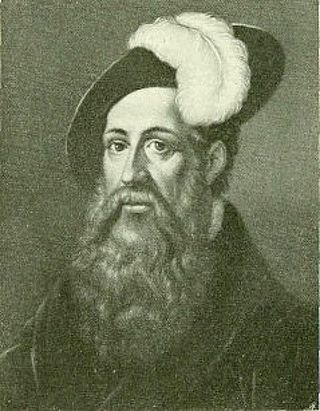
Johann Fust or Faust was an early German printer.

The Gutenberg Bible was the earliest major book printed in Europe using mass-produced metal movable type. It marked the start of the "Gutenberg Revolution" and the age of printed books in the West. The book is valued and revered for its high aesthetic and artistic qualities as well as its historical significance. It is an edition of the Latin Vulgate printed in the 1450s by Johannes Gutenberg in Mainz, in present-day Germany. Forty-nine copies have survived. They are thought to be among the world's most valuable books, although no complete copy has been sold since 1978. In March 1455, the future Pope Pius II wrote that he had seen pages from the Gutenberg Bible displayed in Frankfurt to promote the edition, and that either 158 or 180 copies had been printed.
The Summa grammaticalis quae vocatur Catholicon, or Catholicon, is a 13th-century Latin dictionary which found wide use throughout Latin Christendom. Some of the entries contain encyclopedic information, and a Latin grammar is also included. The work was created by John Balbi, of Genoa, a Dominican, who finished it on March 7, 1286. The work served in the late Middle Ages to interpret the Bible. The Catholicon was one of the first books to be printed, using the new printing technology of Johannes Gutenberg in 1460.

Ulrich Zell was an early printer in Cologne, Germany.

Peter Schöffer or Petrus Schoeffer was an early German printer, who studied in Paris and worked as a manuscript copyist in 1451 before apprenticing with Johannes Gutenberg and joining Johann Fust, a goldsmith, lawyer, and money lender.
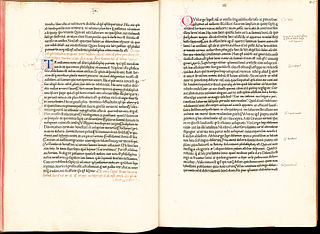
Arnold Pannartz and Conrad Sweynheym were two printers of the 15th century, associated with Johannes Gutenberg and the use of his invention, the mechanical movable-type printing press.
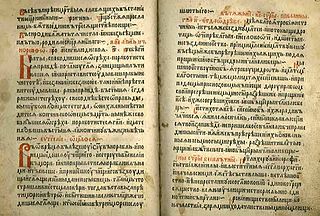
Schweipolt Fiol was a German-born 15th century pioneer of Cyrillic printing. Fiol spent a considerable part of his life in Poland, particularly Kraków, the capital of the Polish Kingdom at the time. The city was famous for its university. The burgeoning of the arts and sciences contributed to the early emergence of book printing here: as early as 1473–1477 there was a print shop in Kraków, which published numerous theological works. The very first book printed in Cyrillic script, Oktoikh (Octoechos), was published by Fiol in 1491 in Kraków.

Johannes Mentelin, sometimes also spelled Mentlin, was a pioneering German book printer and bookseller active during the period during which incunabula were printed. In 1466, he published the first printed Bible in the German language, the Mentelin Bible.
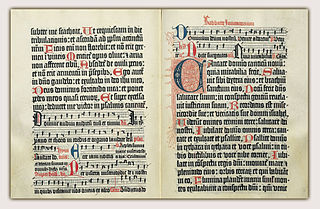
The Mainz Psalter was the second major book printed with movable type in the West; the first was the Gutenberg Bible. It is a psalter commissioned by the Mainz archbishop in 1457. The Psalter introduced several innovations: it was the first book to feature a printed date of publication, a printed colophon, two sizes of type, printed decorative initials, and the first to be printed in three colours. The colophon also contains the first example of a printer's mark. It was the first important publication issued by Johann Fust and Peter Schoeffer following their split from Johannes Gutenberg.

Heinrich Gran was a German book printer of the incunabular era. Together with Johannes Mentelin and Heinrich Eggestein, he was one of the pioneers of book-printing in Alsace.
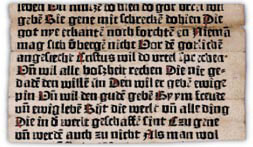
The Sibyllenbuchfragment is a partial book leaf which may be the earliest surviving remnant of any European book that was printed using movable type. The Sibyllenbuch, or Book of the Sibyls, was a medieval poem which held prophecies concerning the fate of the Holy Roman Empire.

Günther Zainer was the first printer in Augsburg, where he worked from 1468 until his death; he produced about 80 books including two German editions of the Bible and the first printed calendar. He came to Augsburg from Strassburg and printed in 1472–76 three large works of moral instruction. He also printed the first large illustrated book, Jacobus de Voragine's Legenda aurea in 2 volumes with 131 woodcuts, 1471–76. Johann Zainer, the first printer in Ulm, was probably his brother.
Adolf Rusch von Ingweiler was a notable German printer and publisher. He was the first printer north of the Alps to print in Antiqua.

Mammotrectus super Bibliam of John Marchesinus is a guide to understanding the text of the Bible. It is one of the most important Franciscan school texts of the later Middle Ages and was written for the education of clerics.
Adam Petri was a printer, publisher and bookseller.

Johannes (Hans) Grüninger (1455–1533) was a German printer whose career spanned from 1482 to 1533 and produced up to 500 publications. Grüninger was one of the single most prolific printers of Strasbourg, printing up to 80 books a year. While a great deal of his publications were Catholic, he managed to print a great variety of works ranging from humanist to scientific texts. His work was fairly equally representative of both Latin and the vernacular; about 39% of his works were printed in Latin and the remaining 61% in German.
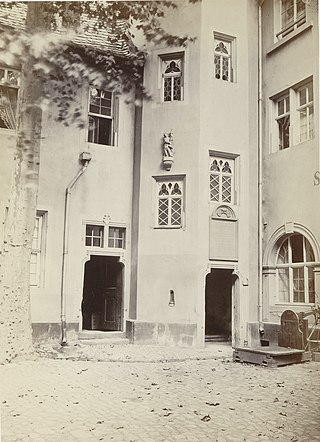
The Humbrechthof, also known as Hof zum Humbrecht, was the building in which Johannes Gutenberg developed his technique of printing with movable metal type and set up his first printing press. It was located in the old town of Mainz. Today, the houses at Schusterstraße 22 and 24 are located on the site.

Martin Schott was a book printer from Strasbourg. One of the earliest printers in Strasbourg, his catalog reflected the tastes of the higher classes in Germany at the time of German humanism.

Peter Schöffer the Younger was a German printer, the son of Peter Schöffer, a former apprentice of Johannes Gutenberg, and a grandson of Gutenberg's financier Johann Fust. He first worked in Mainz, where he set up his first workshop. He was an expert type caster, and his specialty was printing music. Schöffer moved to Worms in 1518, where he printed among other works the Tyndale Bible, which was the first mass-produced English edition of the New Testament, and the first complete German Protestant translation of the Bible. Later in life, he also worked in Straßburg, Venice and Basel.

















